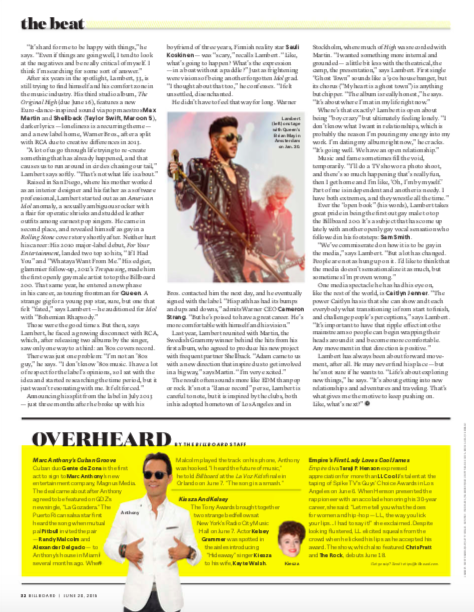Within a music Magazine there is a double-page spread usually featuring either an interview, review or an article based around a Celebrity. These elements contain different meanings and objectives whilst also using dissimilar language features and techniques such as headlines and titles in order to seek the attention of their target audience. The topics/storyline included must have a particular balance of being informing and well entertaining in order for the audience to gain interest and continue reading.
I have chosen to analyse an article that contains an interview, as it’s a possibility that I will be including one in my music magazine for my double-page spread. By reading through and understanding the different journalistic techniques used I will gain an understanding of what elements to include in my own interview and how to lay the article out. This will give me a wider range of inspiration and will support me with producing a well informative, entertaining and professional article.
Below I have analysed the journalistic language used within a 2015 Billboard double page spread featuring Adam Lambert, ‘Don’t Look Back’ by Shirley Halperin.
The above magazine article is about an individual, Adam Lambert opening up about his struggles of stardom and reflecting on his career, sexuality and relationships with others whilst being in the music industry. Firstly, Shirley Halperin uses an enlarged image of Adam Lambert to instantly indicate to the audience the article is about him, with his name and the article storyline next to him. The opening introductory sentence quotes “It’s hard for me to be happy with things”, this correlates to the story he explains further on in the interview.
As the reader, we know that this article is about an interview that has taken place because of the direct quotes weaved throughout the article. The article is written in third person and laid out in 3 columns, telling Adam Lambert’s story in chronological order with an image of the star singing, positioned in the middle of the page surrounded by text- giving the reader a more visual image of Adam Lambert performing on stage. The text written on the image states exactly when and where the image was taken and giving reference to who he was playing with; ‘Lambert (left) on stage with Queen’s Brian Maylin Amsterdam on Jan. 30.’ This allows the audience to really involve themselves by taking in the information being explained and understanding the pressures of performing and giving the audience what they want, forcing the audience to feel a sense of sympathy for him- as well as this the audience have a deeper insight into the vunerability he is feeling when other well known celebrity names are mentioned during the interview, big names such as Caitlyn Jenner and Sam Smith and the similar struggles they have faced whilst being in the spotlight as they’re stories have been visual in the media previously. Having the whole interview being written out in third person gives the ability to the audience to be inside of the stars thoughts and feelings and give deeper experiences of the scenes that are currently present in his life.
Throughout the article we are unaware of the presence of the journalist, which can be slightly unconventional to the usual ‘interview style’ however we do know Shirley Halperin is behind all of this as stated on the first page. This means that all Adam Lambert’s answers constantly flow into the other providing us with one story by leaving no breaks for the questions being asked. This actually gives the story more of a personal feel helping the reader engage with the star on a more one-to-one level which allows this to give a different view on celebrity life, showing that although he is a Celebrity and appears to be extraordinary he is just like any ordinary person.
The journalist has used different language features such as alliteration and metaphors to convey who Adam Lambert is as an individual. Using words such as disconnect, unsettled and lonely is giving specific emotions on how the star is feeling and allowing the reader to feel sympathetic towards him. Overall most of the language used, especially at the beginning is quite negative and disheartening however as we come towards the end of the article we see that the conclusion becomes positive with Adam Lambert explaining that “Life’s about exploring new things”. In my opinion the aim of this article is to show others that although things can be tough at different times during you’re life, they do get better and the way to overcome this is to look on the brighter side of life by getting involved in new things and experiencing new experiences. Lambert then states “Like, what’s next?”, this rhetorical question is the last line of the interview and has the most affect because it shows how far he has come and what is next for him as a Celebrity.

